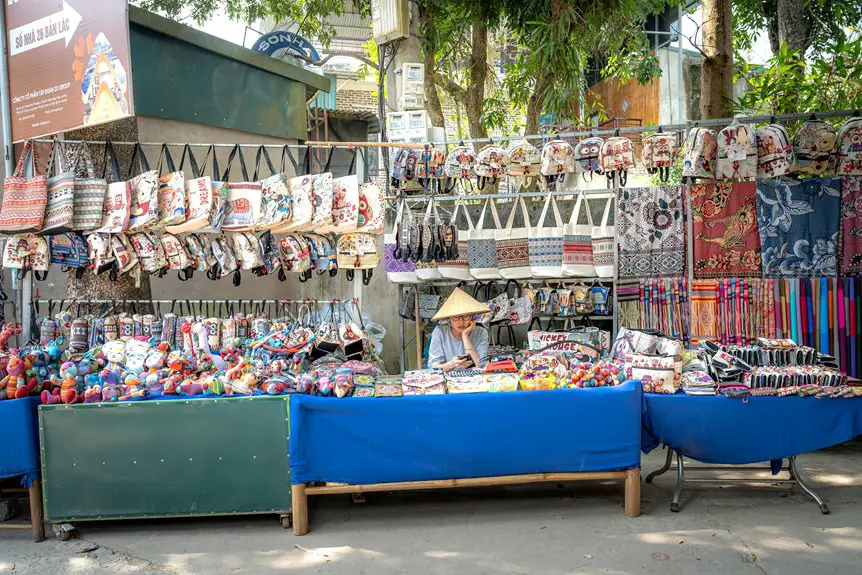Imagine your travel backpack scraping against rough pavement or snagging on sharp edges during a hike. You want a fabric that won’t tear or wear out quickly but still feels light enough to carry comfortably. Choosing the right material is more complex than just picking the toughest option. Understanding the properties of different fabrics can save you from costly replacements and frustration on your journeys.
Table of Contents
Key Takeaways
- Cordura and Nylon fabrics offer superior tear resistance and abrasion protection, ideal for durable travel backpacks.
- Lightweight Nylon reduces overall pack weight while maintaining strong tear-resistant properties.
- Polyester fabrics provide good moisture resistance but generally offer less tear strength than Cordura or Nylon.
- Sustainable, recycled-fiber fabrics combine tear resistance with environmental benefits for eco-conscious travelers.
- Optimal travel backpacks balance fabric durability with weight and reinforced stress points for comfort and longevity.
Key Characteristics of Tear-Resistant Fabrics
Durability defines tear-resistant fabrics, making them ideal for travel backpacks that face rough handling. When you choose a backpack, you want fabric strength that stands up to daily wear and tear without giving in.
These fabrics resist cuts and punctures, so your belongings stay protected no matter where you go. Abrasion resistance plays a vital role here; it means the material can endure friction from rubbing against surfaces like rocks, trees, or other bags without fraying or weakening.
You’ll also notice that these fabrics maintain their integrity even after repeated use, reducing the chance of tears developing over time. By focusing on these key characteristics, you guarantee your travel backpack remains reliable and sturdy throughout all your adventures.
Comparing Popular Materials for Travel Backpacks
Understanding the key traits that make fabrics tear-resistant helps you make smarter choices when picking materials for your travel backpack.
Knowing fabric tear resistance is essential for choosing the best material for your travel backpack.
When weighing Nylon vs. Polyester and Canvas vs. Cordura, consider these factors:
- Durability: Cordura excels with high abrasion resistance, while Canvas offers toughness but can be heavier.
- Weight: Nylon is lighter than Polyester, making it ideal for reducing pack load.
- Water Resistance: Polyester generally handles moisture better than Nylon; Canvas usually requires treatment.
- Tear Resistance: Cordura and Nylon outperform Canvas and Polyester, resisting rips under stress.
Environmental Considerations in Fabric Selection
Although performance matters, you should also weigh the environmental impact of the fabrics you choose for your travel backpack.
Opting for materials with sustainable sourcing helps reduce your carbon footprint and supports responsible manufacturing practices. Look for fabrics made from recycled fibers or those certified by environmental organizations to guarantee they meet strict ecological standards.
Keep in mind that some tear-resistant fabrics rely on synthetic fibers derived from fossil fuels, which can have a higher environmental impact. By selecting backpacks made from eco-friendly materials, you contribute to less waste and pollution.
Being mindful of environmental considerations doesn’t mean sacrificing durability—it means making smarter choices that benefit both your travels and the planet.
Balancing Durability and Weight for Travel Gear
When you pack for your travels, you want gear that can handle rough conditions without weighing you down. Striking the right balance between durability and weight is key.
Here’s how you can optimize your travel backpack:
- Prioritize fabrics with excellent tear resistance yet light enough for easy carrying.
- Consider material flexibility, which enhances comfort and adapts to your load.
- Focus on weight distribution in design to prevent strain and improve stability.
- Choose reinforced stress points only where necessary to reduce overall bulk.
Innovations in Sustainable and High-Performance Fabrics
As you explore options for travel backpacks, you’ll find that innovations in sustainable and high-performance fabrics are transforming the market. These sustainable innovations combine tear-resistance with eco-friendly production methods, offering durability without compromising the planet. High performance textiles now include recycled fibers, biodegradable coatings, and enhanced weaves that prevent rips and abrasions. Choosing backpacks made from these materials means you get long-lasting gear that supports sustainability.
| Fabric Type | Sustainability Aspect | Performance Benefit |
|---|---|---|
| Recycled Nylon | Reduces plastic waste | High tear resistance |
| Organic Cotton | Chemical-free cultivation | Breathable, durable |
| Biodegradable TPU | Breaks down naturally | Water and abrasion proof |
| Hemp Blends | Low water usage | Strength and durability |
| Recycled PET | Uses recycled bottles | Lightweight, tough |
Frequently Asked Questions
How Do Tear-Resistant Fabrics Affect the Cost of Travel Backpacks?
You’ll notice the cost comparison shows tear-resistant fabrics usually raise travel backpack prices because material sourcing involves durable, high-quality fibers. However, investing in these fabrics means you get longer-lasting backpacks, saving money over time.
Can Tear-Resistant Fabrics Be Repaired if Damaged?
When life throws a curveball, you can fix tear-resistant fabrics using repair techniques like patching or sewing. These methods boost fabric longevity, ensuring your backpack stays tough and ready for many adventures ahead.
Are Tear-Resistant Fabrics Comfortable to Carry for Long Periods?
You’ll find tear-resistant fabrics comfortable if you consider breathability factors and guarantee proper weight distribution. Choosing materials that allow airflow and adjusting straps can help prevent discomfort during long periods of carrying your backpack.
Do Tear-Resistant Fabrics Require Special Cleaning Methods?
In the era of Victorian elegance, you’d find fabric maintenance essential. You don’t need arcane cleaning techniques for tear-resistant fabrics; gentle washing and avoiding harsh chemicals keep them durable, ensuring your backpack stays sturdy and stylish for many journeys.
How Do Tear-Resistant Fabrics Perform in Extreme Weather Conditions?
You’ll find tear-resistant fabrics excel in weather resistance, handling rain and wind well. Durability testing shows they maintain strength under extreme conditions, so your backpack stays reliable no matter how harsh the weather gets during your travels.
- Tetron Fabric HS Code: Import and Export Information - June 17, 2025
- Tetron Fabric 36 Length of Roll: What You Need to Know - June 17, 2025
- Tetron Fabric 36: Specifications and Uses - June 17, 2025


